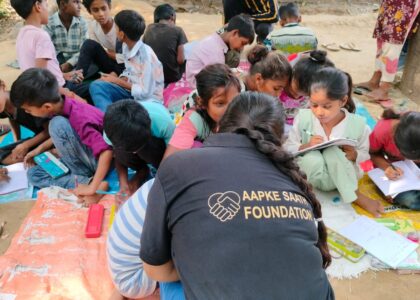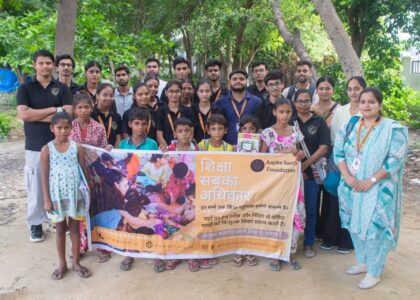From Independence to Today: The Evolution and Challenges of Girls’ Literacy in India

Education has always been a fundamental pillar of societal development, and in India, the journey towards achieving high literacy rates for girls has been marked by both progress and ongoing challenges. The current literacy rate for girls in India stands at approximately 70.3%. This figure represents significant strides since independence, but it also highlights the persisting issues that need to be addressed.
Historical Context of Girls’ Literacy in India
Post-Independence Era (1947-1960s)
At the time of India’s independence in 1947, the literacy rate for girls was alarmingly low. According to the 1951 Census, the female literacy rate was around 8.9%. The major problems included:
1. Cultural and Social Norms: Deep-rooted gender biases and cultural practices that prioritized boys’ education.
2. Lack of Infrastructure: Limited availability of schools, especially in rural and remote areas.
3. Economic Constraints: Poverty that forced families to prioritize immediate economic contributions over education.
1970s-1980s
The introduction of various government initiatives marked this period. Programs such as the National Policy on Education (1968) aimed to increase educational access. However, challenges remained:
1. Continued Gender Bias: Persistent societal norms that undervalued girls’ education.
2. Limited Resources: Insufficient funding and infrastructure to support widespread educational reforms.
1990s-2000s
This era saw significant progress with the introduction of the District Primary Education Programme (DPEP) and the Sarva Shiksha Abhiyan (SSA), which aimed at universalizing primary education. Despite these efforts, problems continued:
1. Regional Disparities: Significant differences in literacy rates between urban and rural areas, and between different states.
2. Dropout Rates: High dropout rates among girls due to early marriages and economic pressures.
3. Infrastructure Gaps: Persistent issues with inadequate school facilities and lack of female teachers.
2010s-Present
The Right to Education (RTE) Act of 2009 was a landmark achievement, mandating free and compulsory education for children aged 6 to 14 years. The introduction of schemes such as Beti Bachao Beti Padhao and scholarships like the Sukanya Samriddhi Yojana further supported girls’ education. However, the following issues remain:
1. Persisting Gender Stereotypes: Cultural norms and gender stereotypes continue to affect girls’ education, particularly in certain regions.
2. Infrastructure and Safety: Issues with school infrastructure, lack of proper sanitation facilities, and safety concerns still hinder girls’ education.
3. Economic Constraints: Poverty continues to impact educational access, with many families unable to afford schooling-related expenses.
Problems Encountered and Current Issues for child Education
Historical Problems:
1. Cultural Norms: Gender biases and early marriage practices that discouraged girls from attending school.
2. Infrastructure: Limited school facilities and a shortage of teachers, especially female teachers.
3. Economic Challenges: Poverty forces families to make difficult choices between education and immediate economic needs.
Ongoing Issues:
Gender Bias and Stereotypes: Despite progress, cultural norms and stereotypes still affect the prioritization of girls’ education in some communities.
Infrastructure Deficiencies: Insufficient school infrastructure and resources, particularly in rural and underserved areas.
Safety and Accessibility: Safety concerns and inadequate sanitation facilities that affect girls’ attendance and participation in school.
Economic Barriers: Persistent poverty that limits families’ ability to invest in education for girls.
How we Encounters the Problems faced by girls for their education
Aapke Saath Foundation is actively engaged in addressing the challenges related to girls’ education in India through various initiatives and programs. Here’s how the foundation is making an impact:
1. Community Awareness: The foundation conducts awareness campaigns to challenge and change societal norms and gender stereotypes that hinder girls’ education. By promoting the value of education for girls, they aim to shift cultural attitudes and encourage families to prioritize schooling for their daughters.
2. Educational Support: Aapke Saath Foundation provides educational resources and support to girls from underserved communities. This includes distributing school supplies, uniforms, and study materials to reduce the financial burden on families and ensure that girls have what they need to succeed in school.
3. Infrastructure Development: The foundation collaborates with local authorities and partners to improve school infrastructure. This includes building and renovating school facilities, ensuring access to clean drinking water, and installing sanitary facilities to support girls’ attendance and participation.
4. Scholarships and Financial Assistance: To address economic barriers, the foundation offers scholarships and financial assistance to help cover the costs of education-related expenses. This support helps families overcome financial obstacles and keeps girls in school.
5. Mentorship and Career Guidance: Aapke Saath Foundation provides mentorship and career guidance to girls, helping them to set educational and career goals. This includes organizing workshops, and coaching sessions, and providing role models to inspire and motivate girls.
6. Safety and Security: The foundation works to improve the safety and security of girls in schools. This includes advocating for safe transportation, creating awareness about child protection, and ensuring that schools have measures in place to protect girls from harassment.
Conclusion
India has made remarkable progress in improving the literacy rate for girls since independence, with the current rate of 70.3% reflecting significant advancements. However, the journey is far from complete. Historical challenges have evolved, but many issues remain unresolved. Addressing these challenges requires a continued commitment to educational reform, increased investment in infrastructure, and efforts to change cultural norms. By focusing on these areas, India can continue to improve girls’ education and work towards a more equitable and prosperous future for all.
Get All the Info You Need About the Campaign from Our Volunteer
Feel free to contact our friendly volunteers—they’re happy to help!




